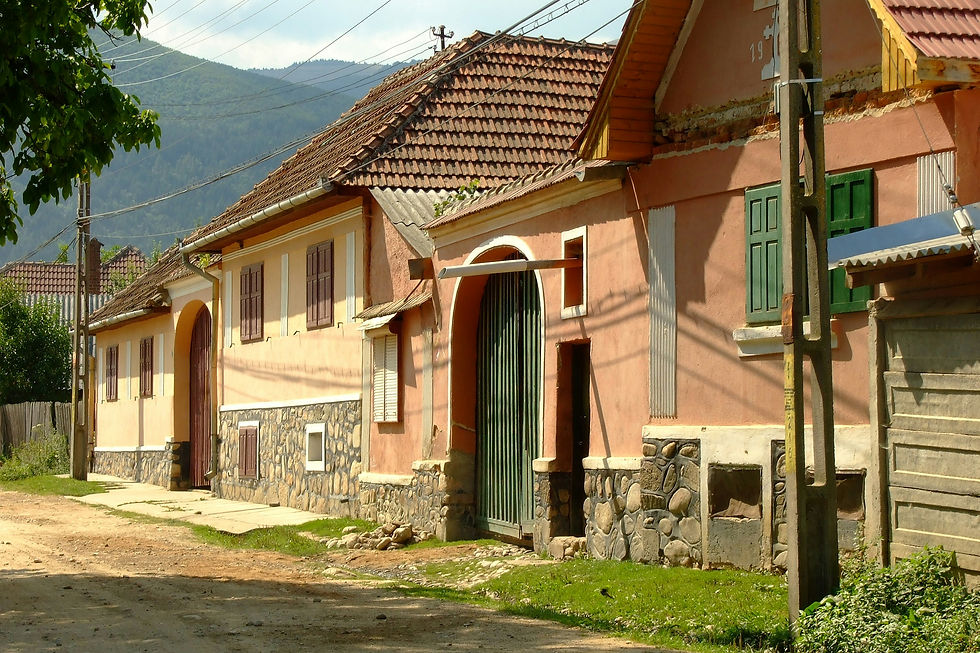From Ruins to Returns: The Billionaire Rush for Italy’s €1 Ghost Town Castles
- Mitt Chen

- Aug 22
- 3 min read
The only thing cheaper than a €1 home in Italy is the due diligence investors pretend they did before buying it. Italy didn’t invent real estate scams - but it did package them with Barolo, frescoes, and a tax rebate. Those €1 homes you keep seeing in medieval ghost towns? They’re not about civic revival. They’re investor bait. And the sharks showed up in droves. First it was retirees and YouTubers buying “romantic ruins.” Now it’s billionaires, family offices, and alt-fund managers flipping cobblestone carcasses into luxury retreats.

The Numbers Don’t Lie
Let’s cut the romance and look at the ledger:
Metric | Reality Check | Source |
Homes “sold” under €1 schemes (2019–2024) | ~8,000 units | Italian Ministry of Culture |
Average renovation cost | €100,000–€250,000 | Agenzia delle Entrate (tax authority) |
Foreign investor share | ~65% of buyers | Corriere della Sera |
Local population decline | -21% in villages <5k people (2000–2020) | ISTAT |
Italy’s rural depopulation has been brutal: over 2,500 towns risk extinction.
Meanwhile, €1 schemes injected ~€1.2B in renovations (private capital, not public).
Investors with second passports are stacking castles like NFTs: underpriced entry, leveraged narrative, luxury exit.
The Hustler’s Makeover
Case in point: Sambuca di Sicilia. One LP wired €5 million to quietly scoop a block of €1 homes, renovated them at €150k a pop, and rebranded the town square as “an integrated heritage hospitality hub.”
Translation: a boutique hotel that charges €900 a night to Instagram pilgrims.
Locals got a wine bar and three Airbnbs. The GP got a tax write-off and a waiting list of London hedge funds desperate for “sustainable exposure.”
Inside Mitt’s Brain 🧠
Here’s what the glossy press won’t print:
It’s not about homes. It’s about visas. Buy, renovate, get a residency track. Second passport optional.
Luxury arbitrage beats yield. You don’t make cash flow renting to locals at €300 a month. You flip the narrative into “medieval luxury” at €3,000 a week.
The state is complicit. Every €1 press release is tourism marketing disguised as policy. The towns don’t care if ten families move in. They care if CNN drops a drone shot. Risk management here? Zero. It’s narrative management.
Vault Intel Drop
The €1 home trend isn’t a housing solution. It’s an access product. Investors aren’t buying bricks, they’re buying stories they can collateralize — for citizenship, for content, or for conferences. That’s not a real estate play. That’s financial theater. Want the next intel drop before CNBC spins it?
Free until you regret it → Join The Vault.
Allocaverse Angle
In the Allocaverse, LP Larry thinks he scored a medieval bargain. Fee Fiend flips it into a lifestyle REIT. Meanwhile, the real villain isn’t the town - it’s the GP with a passport lawyer in his back pocket. If you want this lore drawn in panels (trust me, it reads better as a cartoon than as a prospectus): Allocaverse.
Italy’s €1 castles aren’t reviving anything. They’re the next playground for tax refugees, influencer landlords, and allocators who confuse “heritage investing” with heritage cosplay. So ask yourself: will you be sipping Barolo on the balcony of your ghost-town fortress… or wiring capital calls to finance someone else’s medieval TikTok?
Continue Reading:
Chase the chaos → Solo Women Investors Go Global
Play it safe, stay poor → Rising Sovereign Risk and Debt Exposure in Real Asset Funds
Close tab, miss millions → (your funeral)








it cost thousands to renovate those 1 villas